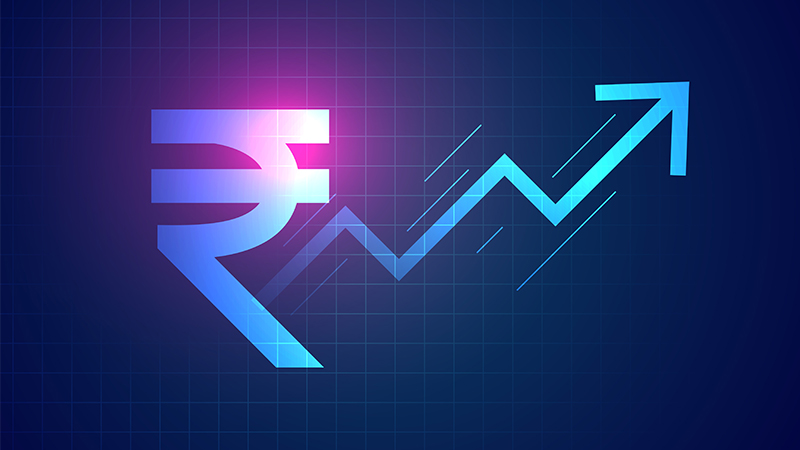India seems to be climbing the ladder of large economies at an accelerated rate and is predicted to become the third-largest economy by fiscal year 2028 (FY28). This is based on actual GDP data as on March 2023, and means a movement of seven places upwards since 2014 when India was ranked tenth. Currently, India is fifth lagging US, China, Germany and Japan.
The economy is expected to overtake both Japan and Germany in 2027 to become the third largest economy. However, at this point, the US economy would still be nearly six times as large as the Indian economy. India’s GDP is estimated to be $5.2 trillion, crossing the $5 trillion benchmark. In a report released end October, the agency has said that the economy will more than double to $7.3 trillion by 2030, from $3.5 trillion in 2022.
According to S&P Global Ratings, India’s GDP growth will reach 7 per cent in the fiscal year 2026-27. In its Global Credit Outlook, the rating agency highlights the importance of India becoming a manufacturing hub, and suggests the need for a robust logistics framework to transform the nation from a service dominated nation to a manufacturing one.
S&P report points out that India’s booming domestic digital market could help with the expansion of the a strong startup ecosystem, particularly in financial and consumer technology areas. Another point of expansion is India’s automotive sector with infrastructure development, innovation and increased investment being contributing factors.
In this context, the nation should develop strategies to contain government borrowing at prudent levels and absorb oil price shocks.
Unlike other major economies, the Indian economy’s population size and age structure has a significant advantage. India has already overtaken China in terms of total population which means India is estimated to have the largest share of the global population at 17.8 per cent, which is more than one-sixth of the global population. Similarly, by 2030, India will overtake China in terms of the share of working-age population and maintain the lowest old-age dependency ratio, which means higher saving and investment rates.
The challenge would be find productive employment for this growing working age population, and creation of suitable employment opportunities is the key. Labour-saving technological developments relating to AI and Generative AI make the situation more challenging. India must ensure that such employment reducing developments are overcome by the growth-expansion effects in a way that net employment growth remains positive while overall GDP growth is enhanced.
Assessing the nation’s liabilities with respect to its GDP is also crucial. Considering the liabilities of the government alone, India’s general government debt-GDP ratio is the second lowest after Germany.
It is worth mentioning that while most advanced economies are facing an economic slowdown, high inflation, and aging populations, the Indian economy is acknowledged to be the fastest-growing large economy by major multilateral organisations, including the IMF.


Leave a Reply